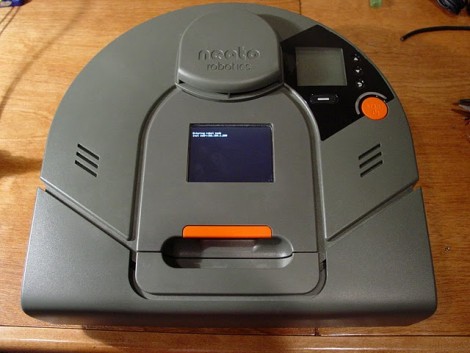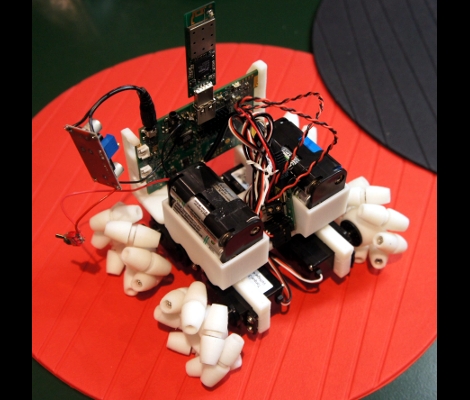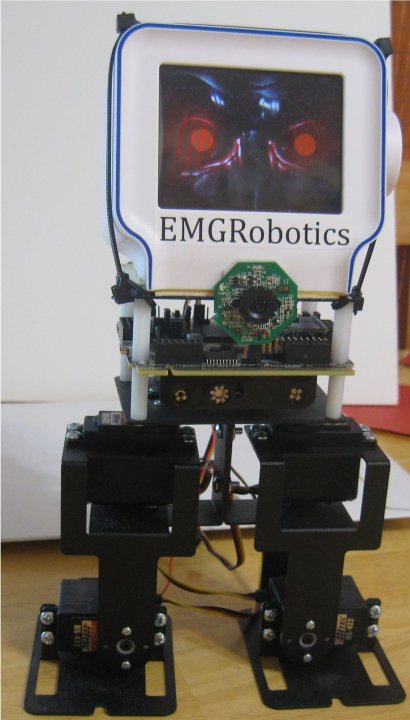So you bought yourself a Neato XV-11 and your floors have never been cleaner. The only problem is that you want to hack around with the hardware without losing your floor-sweeping minion. [Hash] found a solution to the issue by building a computer inside of the dustbin module.
You can see at the center of the image above a touchscreen. Normally this is just blank plastic, as it’s the removable container where your floor sweepings go, but [Hash] was inspired by the modular design. Since that bin is intended to be removable, it’s a perfect way to make add-on hardware removable. All he needed to do was find a way to connect to the Neato’s own electronics. The solution was a non-standard USB cable.
Using the guts from an Insignia Infocast 3.5 (he picked several of them up on clearance at Christmas) he milled an opening for the touch screen, added a cooling fan, and wired up a toggle switch (not pictured above) which powers everything from the 14-17V coming in from that USB cable. The Infocast is a Chumby with a different branding so there’s plenty of Linux-based power and it’s WiFi enabled. Watch [Hash’s] walk through video after the break to see all that went into this clever concept.
We haven’t seen too many hacks that make use of the Neato XV-11. [Hash] is the same guy who hacked the Lidar on the unit, but there must be others turning out impressive projects. Don’t hesitate to send in a tip if you know of one.
Continue reading “Dustbin Computer Lets You Clean And Prototype With A Neato XV-11” →


















